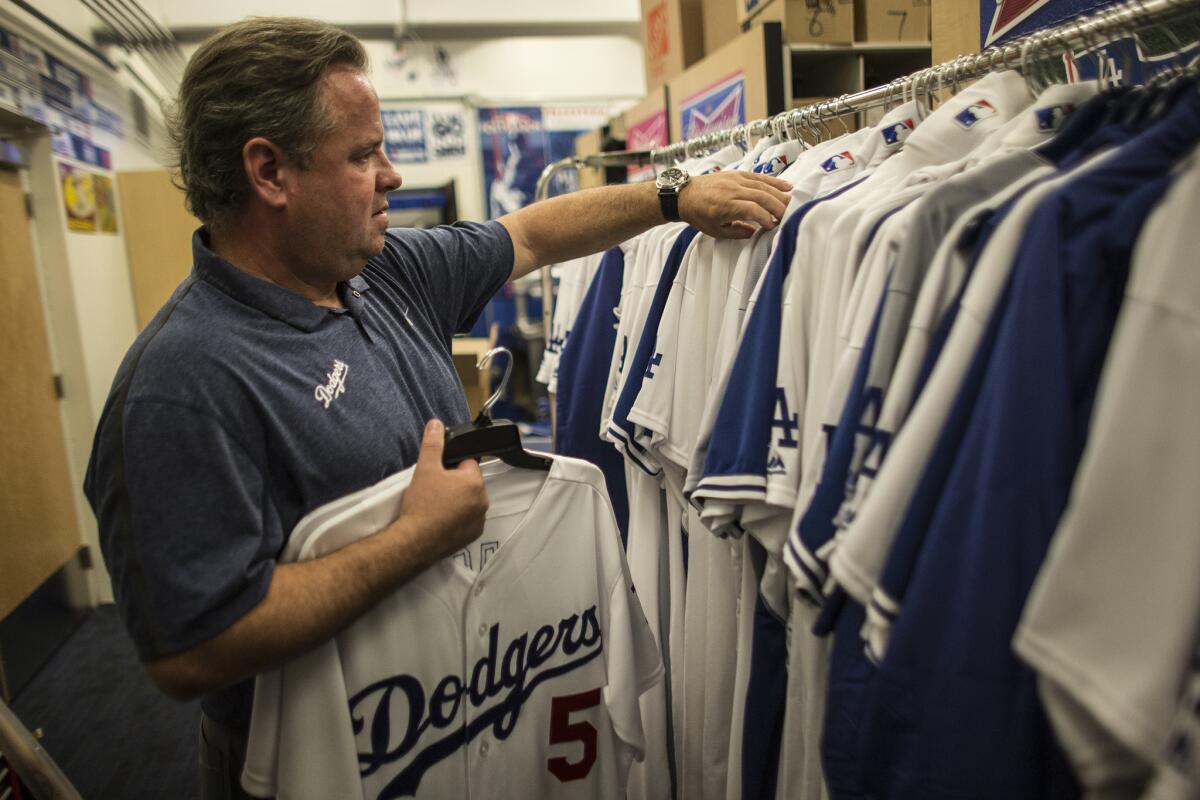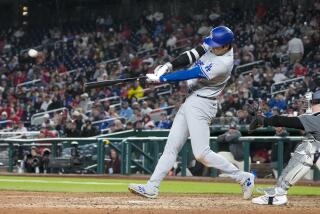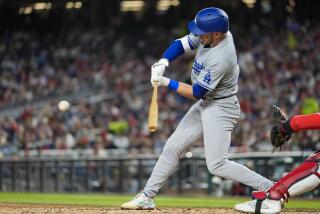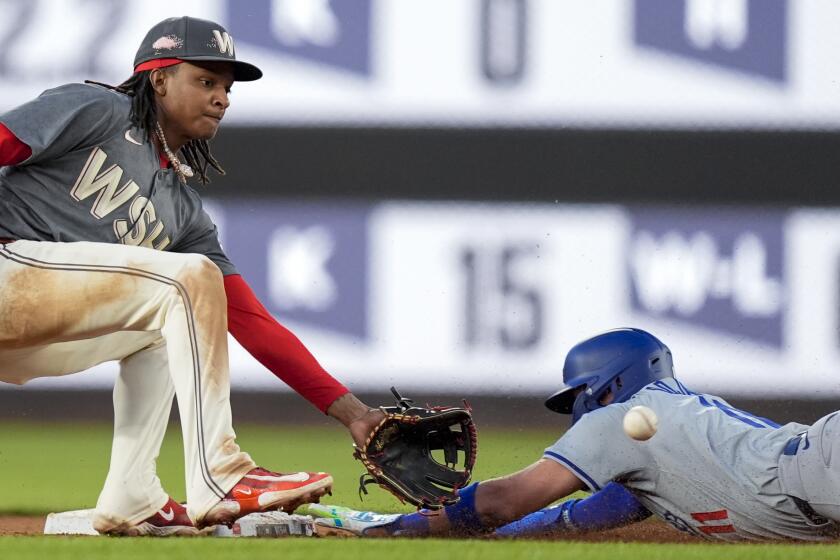The behind-the-scenes negotiations that go into Dodgers uniform numbers

After the Dodgers brokered a trade for All-Star outfielder Manny Ramirez in 2008, there was one final issue to be negotiated before he could be formally introduced to Los Angeles: his jersey number.
“He was the first person you really saw in baseball wearing number 99,” Dodgers clubhouse manager Mitch Poole said. “That took a lot of thinking.
“We kept going back and forth and back and forth: 66, 28. He wanted 11, but that was taken. He wanted 34, like his teammate Big Papi [David Ortiz] was in Boston, but I told him that wasn’t going to happen. Then he came back with 66.”
Poole printed a blue-and-white jersey that bore “Ramirez” and “66” on the back, then got the call that the slugger had changed his mind again and wanted to wear 99. And so he did.
For 11 years, Poole has had full control over the uniform number given to every Dodger. He’s the sole reason nobody, including Ramirez, has worn 34 since Fernando Valenzuela. No one else is worthy of it, as far as Poole is concerned.
Poole has seen Rolexes and motorcycles traded for the rights to a number. Once, he persuaded Japanese pitcher Takashi Saito to wear 44 — quite the feat, considering four is considered unlucky in Japan because it is sometimes pronounced like shi, which means death in Japanese.
Sometimes Poole consults a player to decide on a number and sometimes he doesn’t, but he said there’s always a thought process behind his choice.
“I’ve got number 15, I’ve got number 28, I’ve got number 48,” Poole texted to Bud Norris last month as the pitcher boarded a plane to join the Dodgers.
The number that Norris wore in Atlanta, 20, is retired in L.A. for Hall of Fame pitcher Don Sutton. Instead, Norris chose 28, which became free a week earlier when catcher Austin Barnes was sent to the minors.
Poole said the reassignment of the number didn’t earn him any favor from Barnes, but the veteran equipment manager has enough to consider trying to balance the whims and superstitions of the 25 men on the active roster.
Poole gave Corey Seager No. 5 because “we wanted to give him a number that was going to stand out. He’s the future of our ballclub.” He gave Yasiel Puig No. 66 because “he’s a great guy, I really like him, but he was tough on coaches . . . he’s a devil, you know?”
Yet, Poole said most of his decisions regarding uniform numbers relate to their connections to players from baseball’s storied past.
When he gives out No. 21, he thinks about Pirates great Roberto Clemente. When he gives out No. 3, he thinks about Babe Ruth. Poole described giving out No. 6 as a “tender thing” because it was worn by 1970s Dodgers star Steve Garvey.
Currently, Trayce Thompson wears No. 21 and Chris Taylor wears No. 3. (Did Taylor channel Ruth in making his first major league home run, last week against Arizona, a grand slam?) Infielder Charlie Culberson, a member of the 40-man roster, wears No. 6. Whether they realize it, Poole has handed them big sleeves to fill.
However, superstitions aside, Poole noted that a number on a uniform will never be the reason a player makes it in the majors.
“There are times when you call a guy up and you just assign him a number,” Poole said. “Sometimes he’s disappointed, but it’s not about the number. It’s about the player.”
Twitter: @ReneeMGriffin
More to Read
Are you a true-blue fan?
Get our Dodgers Dugout newsletter for insights, news and much more.
You may occasionally receive promotional content from the Los Angeles Times.






